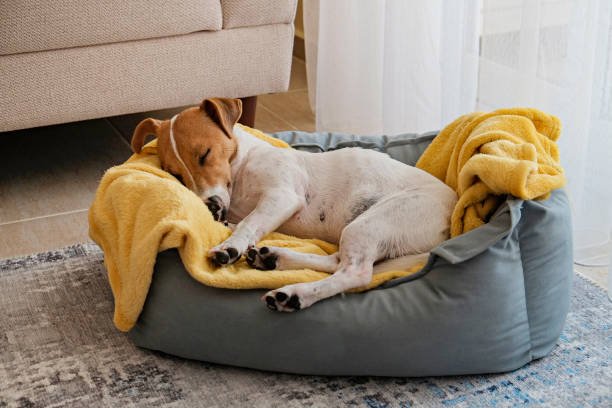Creating a safe, pet-friendly home is essential for both your furry friend’s well‑being and your own peace of mind. Whether you have a curious kitten, a playful pup, a tiny hamster, or an adventurous bird, this guide walks you through every room—covering hazard prevention, enrichment, and grooming your space for happier, healthier pets.
1. General Preparation – Homewide Essentials
Before diving into room‑by‑room tips, let’s establish the foundation:
1.1. Establish safe zones:
Create designated resting or play areas with cozy bedding and familiar bedding—this gives pets a comforting base.
1.2. Pet‑safe cleaning products:
Swap out harmful cleaners like bleach and ammonia for pet‑approved, non‑toxic alternatives. Keep spray bottles locked away.
1.3. Hide dangling cords:
Cords from blinds, lamps, and electronics are tempting chew targets. Use cord organizers or clips to keep them out of reach.
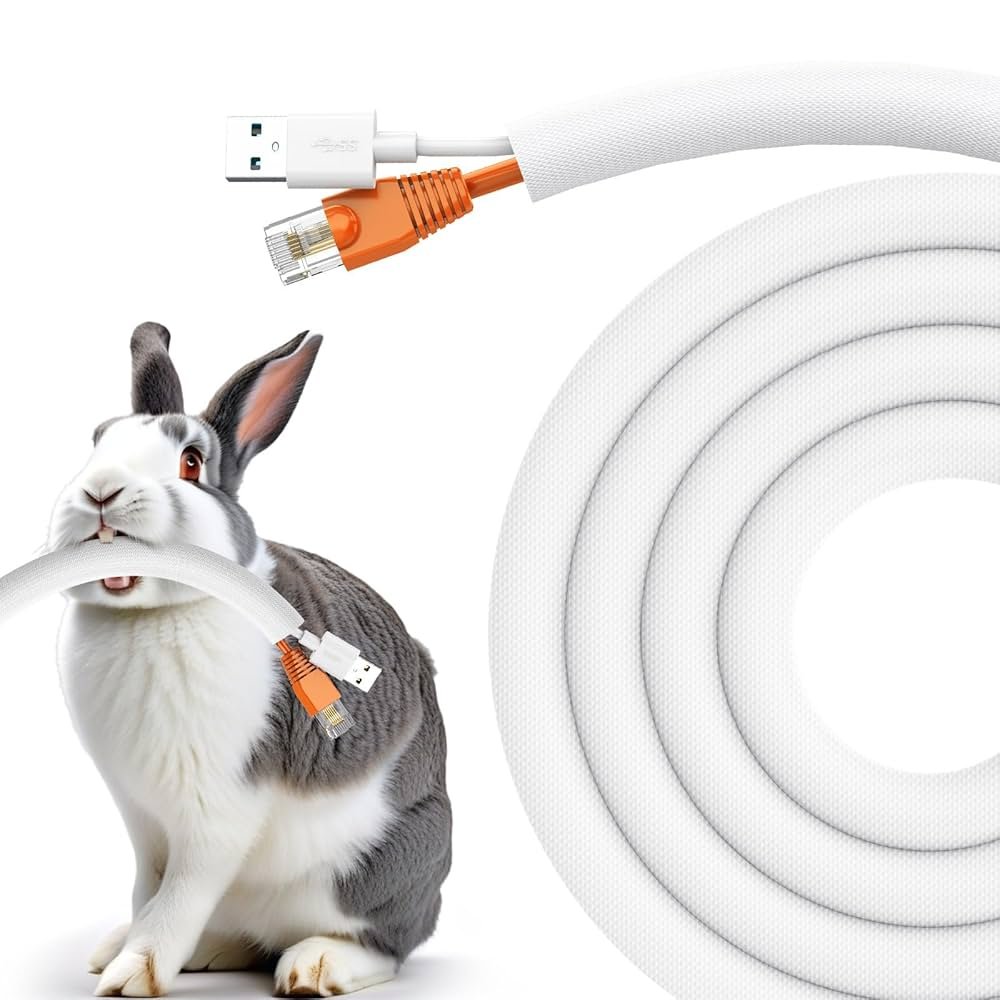
1.4. Secure small objects:
Tiny household items—rubber bands, coins, batteries—are swallowing hazards. Keep countertops and low shelves clutter‑free.
2. Living Room – The Hub of Activity
The living room often sees most pet interaction, so it should be safety‑optimized and pet‑friendly.
2.1. Furniture safety:
Ensure tall items like bookshelves are anchored to the wall to prevent tipping if a pet climbs.
2.2. Pet‑safe fabrics:
Choose upholstery that resists claws and is easy to clean; microfiber and leather are good picks.
2.3. Houseplants:
Cherry‑picking non‑toxic, pet‑friendly greenery (e.g. spider plant, Boston fern). Remove or elevate any toxic plants like lilies, oleanders, philodendrons.
2.4. Fireplace/fire hazards:
Install pet‑proof screens or enclosures to keep paws and tails safe.
2.5. Toy storage:
Use bins that are stable and can’t tip if pets investigate for treats.
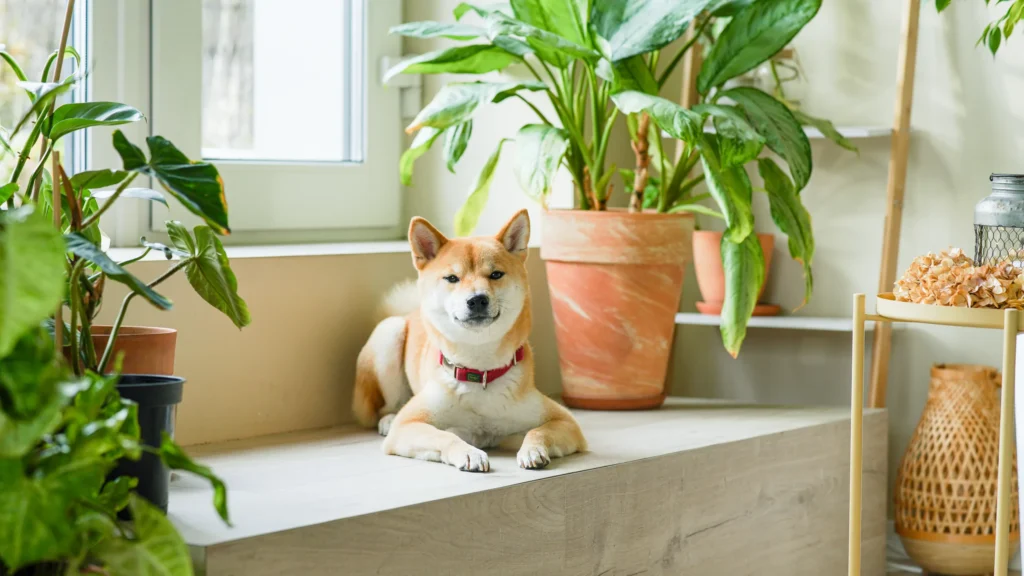
3. Kitchen – High Risk, High Reward
The kitchen is full of temptations and hazards. Proper modifications help protect pets and reduce stress.
3.1. Secure trash cans:
Use covered, heavy‑duty bins or install pet‑proof latches. Kitchen scraps may cause digestive or obstruction issues.
3.2. Counter‑surfing deterrents:
Keep dishes off counters. Use motion‑activated deterrents or aluminum foil to discourage jumping.
3.3. Toxin awareness:
Ingredients like chocolate, grapes, garlic, onions can be deadly. Store food securely and consider adding warning magnets to the fridge listing pet‑safe and dangerous foods.
3.4. Appliance safety:
Keep lids shut on dishwashers and washing machines to prevent pets from getting trapped.
3.5. Slip prevention:
Place textured mats or runners near sinks to prevent paw slips on wet floors.
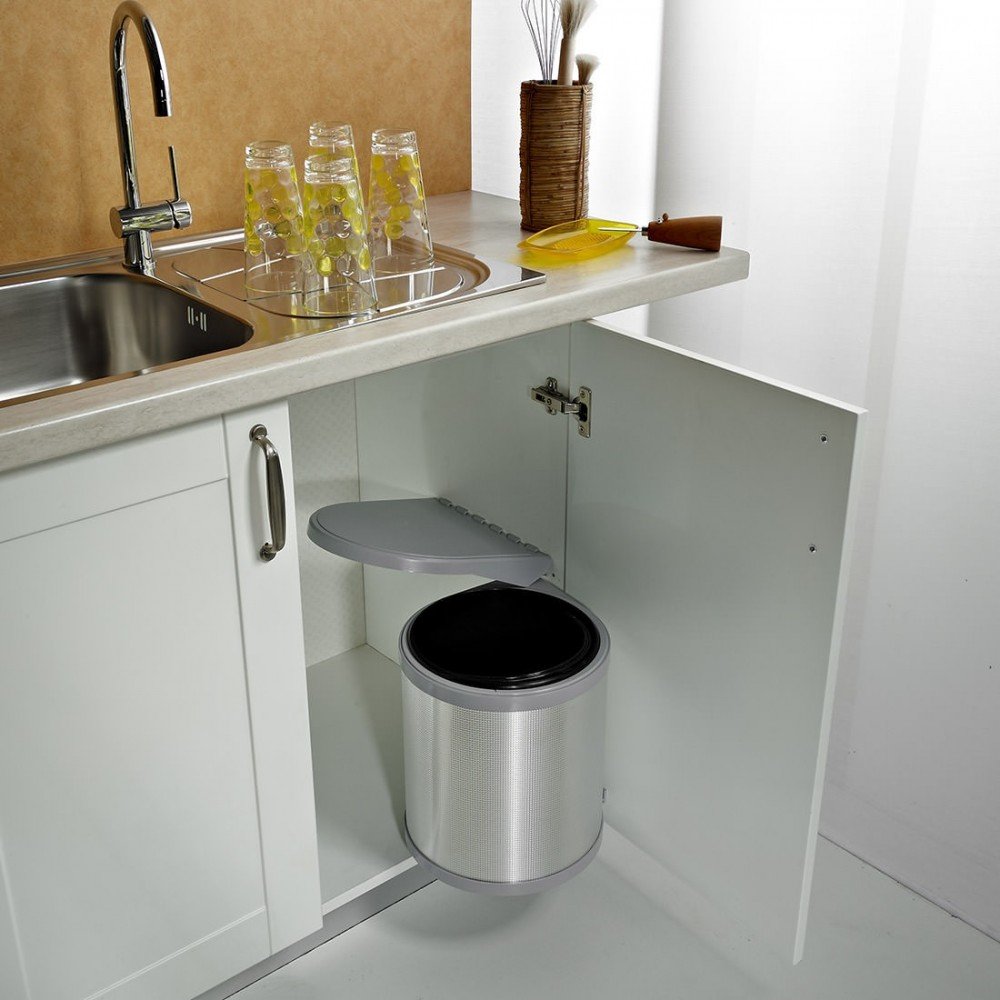
4. Bathroom – Small Space, Big Hazards
Though compact, bathrooms harbor many common pet‑risk items.
4.1. Secure medications and toiletries:
Store pills, nail polishes, mouthwashes, and creams in locked cabinets.
4.2. Keep toilet lids closed:
Pets drinking from toilets heightens germ exposure; simple lids help.
4.3. Use pet‑safe cleaners:
Ensure tub, deodorizer, and toilet bowl cleaners are non‑toxic alternatives.
4.4. Laundered clothes off the floor:
Wet towels and underwear are invitation stations for curious pets; always keep floors clear.
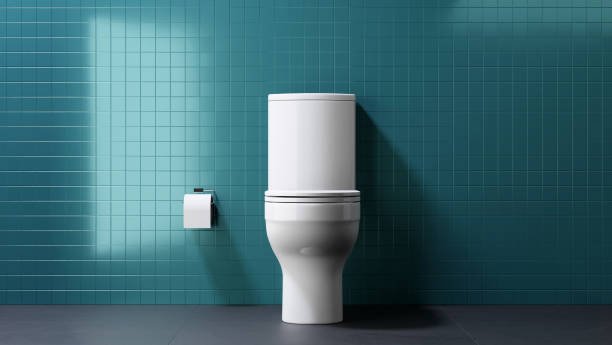
5. Bedroom – Your Cozy Sanctuary
The bedroom is often off‑limits or mixed share, so pet safety matters.
5.1. Under‑bed safety:
Block access with boards or bed skirts to prevent hiding or scratching.
5.2. Soft bedding:
Place a washable, comfy pet bed near yours for your pet to sleep peacefully.
5.3. Clothing safety:
Avoid leaving tempting items like hair ties or socks on the floor.
5.4. Electrical precaution:
Unplug or cover chargers and cables, especially if you charge overnight near your bed.

6. Home Office / Study – Work + Pet Zone
As more people work from home, creating a pet-friendly workstation fosters productivity and pet safety.
6.1. Cable management:
Bundle cords with covers and position under desks to deter chewing.
6.2. High shelf sanctuary:
Create a safe, elevated resting spot for cats so they feel included yet undisturbed.
6.3. Plant proofing:
Avoid desk plants like dieffenbachia or pothos— opt for safe ones like succulents or orchids.
6.4. Sharp object placement:
Scissors, staples, and pens belong in drawers.
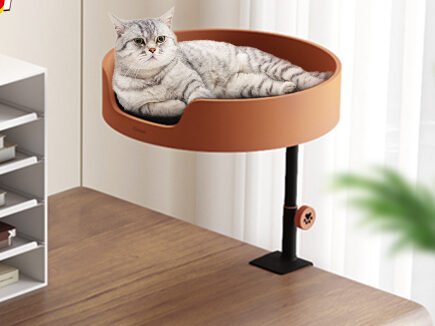
7. Laundry Room – Watch the Washing!
Often overlooked, laundry rooms hold hazards like chemicals, machines, and cords.
7.1. Lint trap close‑ups:
Lint may look like food to pets. Empty the trap frequently and close machine lids.
7.2. Detergent and softener security:
Store detergent pods and bottles in tall cabinets or on high shelves.
7.3. Keep doors closed:
Prevent pets from climbing in washing machines or dryers.
8. Garage / Basement – Work + Storage Area
These spaces house many dangerous materials, so keep pets away unless supervised.
8.1. Locked chemical storage:
Paint thinner, antifreeze, fertilizers—all hazardous. Store behind locked doors.
8.2. Secure tools and nails:
High‑shelf storage or cabinets protect from sharp items.
8.3. Small animal risk:
If exposed to rodents or snakes, watch for bites or ingestion. Consider sealed bins for dry pet kibble.
8.4. Car leak awareness:
Antifreeze spills smell sweet to pets but are highly toxic. Clean spills immediately.
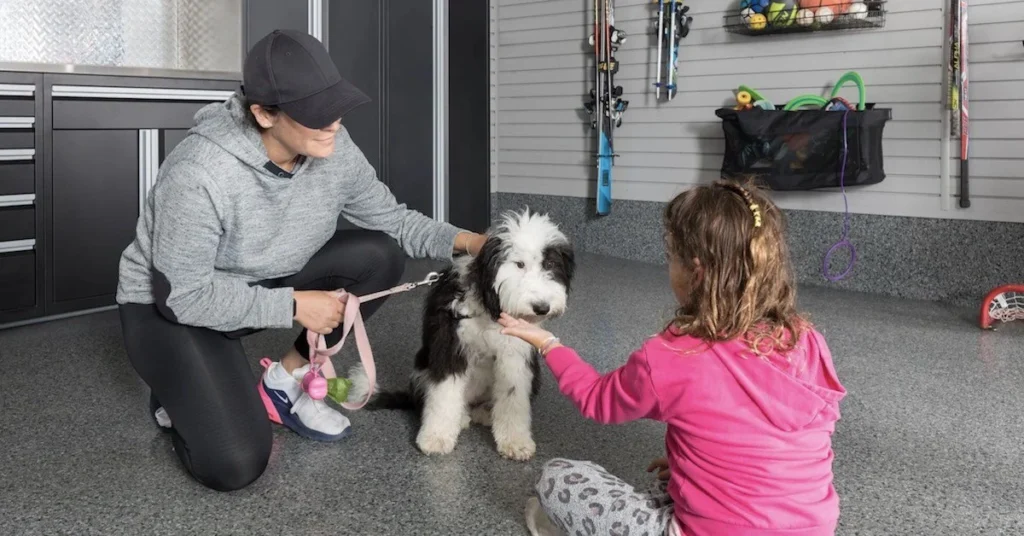
9. Outdoor & Yard – Expand Your Safe Zone
Let pets roam with freedom but keep them safe from outdoors dangers.
9.1. Fence integrity:
Check for gaps, holes, or dig‑through sections. Consider buried mesh if you have a digger.
9.2. Toxic plant removal:
Avoid plants like daffodils or oleanders. Instead, plant pet‑safe herbs like basil or rosemary.
9.3. Secure garbage and compost bins:
Use heavy lids or tie lid handles down to prevent wildlife or pet access.
9.4. Provide shade & water:
Outdoor pets must have shaded zones and fresh water at all times.
9.5. Insecticide caution:
Minimize use of lawn pesticides; if used, restrict access for specified days.
10. Special Considerations by Pet Type
Adapt each space to your pet’s specific needs:
10.1. Cats: vertical space & litter control
- Install tall cat trees and wall shelves.
- Use covered litter boxes with regular maintenance to reduce tracking.
10.2. Dogs: chews, enrichment & secure exit
- Provide durable toys, puzzle feeders.
- Use baby gates to section off zones on busy days.
- Ensure exits are double‑gated if your dog darts.
10.3. Small pets: cages & enrichment
- Place cages away from direct sunlight and drafts.
- Secure lids and include tunnels, chew toys, hiding huts, and hay.
10.4. Birds & reptiles: specific habitat care
- Use flight cages or terrariums with secure tops and proper lighting.
- Keep electrical cords away from perches.
11. Pet‑Proofing Checklist & Maintenance Plan
Stay on track with this ongoing checklist:
| Area | Task | Frequency |
|---|---|---|
| All Rooms | Inspect cords, small items, plants, hazards | Monthly |
| Kitchen | Check stored food, clean per counters | Weekly |
| Bathroom | Inspect cleaning items, secure meds, check plumbing leaks | Weekly |
| Garage/Basement | Inspect chemical storage, floor debris, tools | Monthly |
| Yard | Fence integrity, periodical plant check, water availability | Bi‑weekly/As season‑needed |
| Outdoor Pots | Replace toxic plants | Seasonally |
12. Behavioral Signs of Safety Stress
Watch for signs your pet is uneasy in certain zones:
- Dogs: pacing, drooling, hesitation near doors or rooms.
- Cats: hiding, over‑grooming, spraying outside litter box.
- Small animals: cage chewing or digging at cage edges.
If signs appear:
- Remove yourself and calmly ask your vet or pet behaviorist for guidance.
- Increase positive reinforcement training in that zone.
13. DIY Enrichment for Each Room
Turn everyday items into play zones:
- Living room: cardboard box forts under coffee tables.
- Kitchen: scatter meals via food‑dispensing toy for excitement.
- Bedroom: wrap basic cat wand toy into the sheets prior to sleep.
- Office: hanging bins with shredded paper for hamsters or small pets.
14. Smart Tech for Peace of Mind
Enhance environment with helpful devices:
- Pet cameras: Monitor wild roaming or separation anxiety.
- Smart feeders and water fountains: Ensure hydration and nutrition even when away.
- Automatic doors: Cat flaps with microchip reading—secure access in and out.
15. Final Thoughts – Tailor & Enjoy
Pet‑proofing is an ongoing effort—your home grows with your pet. Start with key rooms, adapt as your pet ages or changes behaviors, and share your progress. Your pet’s safety cultivates trust, deepens your bond, and keeps your home stress‑free.

